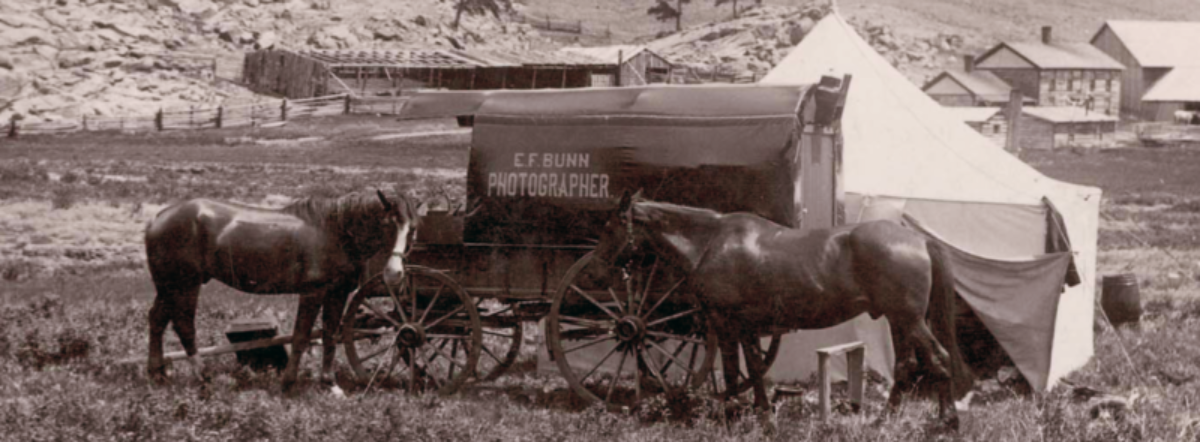John E. Beebe was born into a prominent family on December 11, 1851, in Galena, Illinois, the fifth of ten children. His father, Thomas Hempstead Beebe (1819-1906), was the president of the Peshtigo Lumber Company, and his mother, Catherine Eddowes Beebe, was a native of Delaware. They met and married in Galena. The family moved to Chicago, Illinois, shortly after John’s birth. Two Irish domestic servants assisted the busy household.
In the mid-1860s, John attended the University of Chicago’s preparatory school. By 1869, he had secured a job at H. W. King’s wholesale clothing business, initially as a clerk and later as an assistant bookkeeper. The Great Chicago Fire of October 1871 destroyed the Beebe family home at 368 Ohio Street, and their lumber business suffered a loss of three-quarters of a million dollars.
John Beebe and Lucia Chase were married on New Year’s Eve, 1874, at the Chicago home of the bride’s parents. In 1876, Beebe opened a photography studio in Chicago. He was active in both the Chicago Photographic Association and the Photographers’ Association of America, serving as an officer in both organizations. He was the youngest man to serve as president of the latter organization.

In 1881, Beebe incorporated the Chicago Dry Plate & Manufacturing Company. He championed the new dry plate negative process over the older wet plate chemistry, declaring, “All odors of ethers and chemicals are banished from my studio. No waiting for plates to be prepared, nor hurry on account of plates spoiling, thereby losing expression, for sake of saving the plate… In a word, I am now enabled to give all my time and attention to the artistic part of my profession, the annoyance and unreliability of the chemical manipulations having been reduced to the minimum.”
By the fall of 1882, the Beebe plates were so popular that the firm built a new factory near Lake Michigan devoted to manufacturing them. Each batch underwent testing before being sold. In June 1883, the major dry-plate firms agreed to offer their plates at reduced prices. However, by the following month, Beebe must have realized that the dry plate business was no longer profitable. He returned to operating a photography studio, partnering with well-known Chicago portrait photographer Henry Rocher. Sadly, the Chicago Dry Plate Company closed in March 1884.
After the closure, Beebe moved to Denver, Colorado. He opened a ground-floor photography studio at 438 Arapahoe Street. In the fall of 1886, Beebe exhibited portraits of Denver society at the Manufacturers’ Exhibition. The following year, his brother Christopher joined the business. Frank Haffner, hired as a photographer in 1890, took over the studio two years later when Beebe established the Beebe Photo-Engraving Co. The new company specialized in half-tone copper engraving, zinc edging, wood engraving, line and map work, artistic illustrating, designing, and photographing.
During this time, Beebe was enrolled at Gross Medical College and was chosen class president. He graduated in 1895. Subsequently, he returned to Chicago and began practicing medicine. After practicing medicine for five years, Beebe changed careers again, this time studying advertising at the Page Davis School of Advertising, one of the first correspondence schools in the field. John Lee Mahin, president of the Mahin Advertising Company and one of the men associated with the correspondence school, hired Beebe before he completed the program. When asked why he gave up his medical practice to work in advertising, Beebe stated: “…while I could make a modest living at medicine, I could not lay up anything for the future… I wanted the opportunity to go after business and not sit and twirl my thumbs and wait for it to come to me… In ninety days I was earning my guarantee, in five months I was in Europe where I remained several months for one of our customers, and have been busy enough ever since to satisfy the most ambitious.”

His experience with photography and engraving enhanced his advertising business. In 1906, he wrote an article on Photographic Salesmanship, stating, “…photographic representation… always attracts attention, creates interest, stimulates desire and ends in the resolve to buy.” His writings also reference historical photography, as well as contemporary Chicago-based photographer George Lawrence and his panoramic views made from kites. Beebe’s final career move was as director of publicity and trade extension for the Old Ben Coal Corporation.
After a long illness, Beebe’s wife died in March 1920. He married Clara Eleanor Pause on October 23, 1923, in Alameda, California. In 1933, his only son and namesake passed away. John E. Beebe died on November 14, 1936, of coronary thrombosis and arteriosclerosis. He is buried at Greenwood Cemetery in Galena, Illinois.
Thank you to Jori Johnson, Ann Sneesby-Koch, and Aaron Marcus, History Colorado.

Interesting post and so well done. Thank you!
He reinvented himself well!